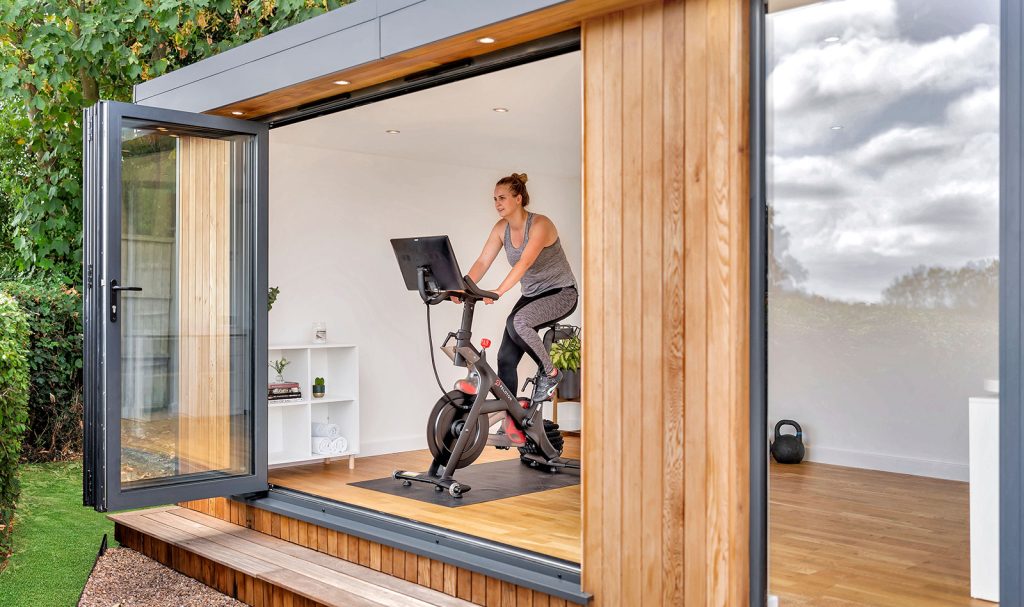Transform your backyard into a luxury fitness sanctuary with a dedicated garden room gym – where convenience meets motivation right outside your door
Understanding the Benefits of a Garden Room Gym
Converting your garden space into a private fitness sanctuary offers numerous advantages that go beyond traditional home or commercial gyms. A garden room gym represents a perfect blend of convenience and dedicated workout space, allowing you to create the ideal environment for achieving your fitness goals. With the rising trend of home fitness solutions, garden room gyms have seen a remarkable 85% increase in popularity since 2020.
Privacy and Convenience
A garden room gym offers unparalleled privacy for your workout sessions. No more queuing for equipment or feeling self-conscious at public gyms. Research shows that 73% of people feel more confident exercising in private spaces, leading to more consistent workout routines and better results.
Separation from Home Life
Having your gym separate from your main living space creates a vital psychological boundary between home and fitness activities. This physical separation helps maintain focus and motivation, with studies indicating that 89% of people report better workout consistency when exercising in a dedicated space.
Year-Round Fitness Solution
Modern garden rooms provide excellent insulation and climate control, ensuring comfortable workouts regardless of weather conditions. This year-round accessibility eliminates weather-related excuses and helps maintain consistent fitness routines.
Planning Your Garden Gym Space
Successful garden gym design begins with careful planning and consideration of various factors. The initial planning phase is crucial for creating a space that meets your fitness needs while complying with local regulations.
Choosing the Right Size
- Consider allowing 15-20 square metres for a comprehensive home gym setup
- Factor in ceiling height of at least 2.5 metres for overhead exercises
- Include additional space for future equipment expansion
- Plan for storage areas and recovery zones
Optimal Location Selection
- Choose a level ground area with good drainage
- Consider natural light exposure and garden views
- Ensure adequate distance from boundaries and neighbours
- Account for easy access from your home
Building Regulations and Permissions
Most garden rooms fall under permitted development rights, but it’s essential to verify local requirements. Key considerations include building height (typically limited to 2.5m), distance from boundaries, and intended use. Always consult local planning authorities before beginning construction.
Essential Design Considerations
The success of your garden gym largely depends on thoughtful design choices that create an optimal workout environment. Each element should contribute to both functionality and motivation.
Flooring Solutions
- Heavy-duty rubber flooring for weight areas
- Shock-absorbing surfaces for high-impact zones
- Anti-slip matting for safety
- Durable laminate for cardio equipment areas
Climate Control Systems
Maintaining optimal temperature is crucial for comfortable workouts. Install efficient heating and cooling systems, with smart climate control for automatic temperature regulation. Consider underfloor heating for winter comfort.
Ventilation Requirements
Proper airflow is essential for a healthy workout environment. Install multiple ventilation points, including windows and mechanical systems, to ensure adequate air circulation during intense workouts.
Mirror Placement and Lighting
- Full-length mirrors on key walls for form checking
- LED lighting with different brightness settings
- Natural light through strategically placed windows
- Task lighting for specific workout zones
Creating the Perfect Layout
An effective gym layout maximises space utilisation while ensuring safe and efficient workouts. Consider traffic flow and exercise patterns when positioning equipment.
Equipment Zones
- Cardio area with space for movement
- Strength training zone with proper spacing
- Functional fitness area for bodyweight exercises
- Stretching and yoga space
Storage Solutions
Implement smart storage solutions to keep your gym organised and clutter-free. Wall-mounted racks, mobile storage units, and built-in cabinets help maximise floor space for workouts.
Recovery Areas
Include a dedicated recovery zone with space for stretching, foam rolling, and cool-down exercises. Consider adding a small seating area for rest between sets.
Technical Requirements
Modern gym facilities require careful consideration of technical specifications to ensure safe and effective operation.
Electrical Planning
- Multiple power points for equipment
- Dedicated circuits for high-power machines
- Emergency shut-off switches
- USB charging points for devices
Internet Connectivity
Strong WiFi coverage enables smart equipment connectivity and access to online workout resources. Consider installing a dedicated router or signal booster.
Security Features
- Smart locks with remote access
- Motion-sensor lighting
- CCTV coverage
- Alarm system integration
Equipment Selection and Organization
Choose equipment that aligns with your fitness goals while maximising space efficiency. Research shows that 65% of home gym users prefer multi-functional equipment for space optimization.
Essential Fitness Equipment
- Multi-functional power rack
- Adjustable bench
- Free weights and kettlebells
- Cardio equipment suited to goals
- Resistance bands and accessories
Space-Saving Solutions
Invest in foldable or wall-mounted equipment where possible. Consider modular systems that can be reconfigured as needed.
Future Expansion Considerations
Plan for potential equipment additions by leaving appropriate space and power supply options for future upgrades.
Finishing Touches
The final details can significantly impact motivation and workout enjoyment. Create an inspiring environment that encourages regular use.
Aesthetics and Motivation
- Motivational wall graphics
- Branded colour schemes
- Indoor plants for improved air quality
- Personal achievement board
Entertainment Systems
Install a comprehensive audio-visual system including mounted TVs, quality speakers, and device connectivity options for enhanced workout experiences.
Personal Touches
Add elements that reflect your personality and fitness journey, creating a space that truly feels like your own.
Maintenance and Upkeep
Regular maintenance ensures your garden gym remains safe and effective for years to come.
Regular Cleaning Routines
- Daily equipment wipedown
- Weekly deep cleaning
- Monthly maintenance checks
- Quarterly deep cleaning of flooring
Equipment Maintenance
Establish a regular maintenance schedule for all equipment, including lubrication, tightening of components, and safety checks.
Climate Control Checks
Regularly inspect and service climate control systems to maintain optimal workout conditions throughout the year.
Making the Most of Your Investment
Maximise the value of your garden gym through regular use and potential income generation.
Creating Workout Schedules
Develop structured workout plans that make full use of your equipment and space. Consider working with a personal trainer to optimise your routine.
Maximizing Usage
Encourage family members to use the space and consider sharing with friends to maintain motivation and accountability.
Additional Income Opportunities
Consider offering personal training sessions or small group classes to offset your investment, ensuring compliance with relevant regulations and insurance requirements.
FAQ
Does a home gym increase property value?
A: While a home gym won’t always translate into a direct increase in your home’s market value, it can definitely add appeal and help your home stand out to buyers—potentially leading to a faster sale.
How much does a backyard shed gym cost?
Total- A reasonable estimate for your complete home gym shed setup would be around $10,000. At this price estimate, your monthly cost over a 15 year period would be at $55. Compared to a $40 gym membership and fuel costs, a home gym shed could actually save you money in the long run.
How much does it cost to build a gym in your backyard?
This includes various apparatus for strength training, cardio workouts, flexibility exercises, and more. Basic outdoor gym setup: you are looking at somewhere in the range of $10,000 to $50,000 for a range of cardiovascular, strength training, and flexibility equipment.
What size garden room without planning permission?
You may build without planning permission if your garden room is located more than 20 metres from your main building and less than 10m x 10m in size.
Sources
[1] https://www.crownpavilions.com/uses/garden-gym/
[2] https://www.cabinmaster.co.uk/blog/what-is-a-garden-gym
[3] https://www.crownpavilions.com/news/top-5-garden-gym-ideas-you-must-consider/


